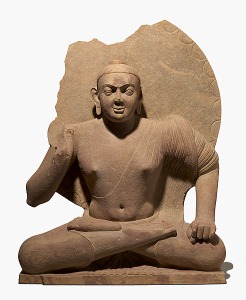Search the website:
-
BUY THE BOOK

AVAILABLE VIA
-
Recently
- 2/21/23 at the Natural History Museum of Utah: “Chasing Shiva: The Hunt for Looted South and Southeast Asia Antiquities” September 2, 2023
- UPDATED > USA vs One Ancient Mosaic: A Looted Syrian Masterpiece in Los Angeles May 26, 2018
- The Sidon Bull’s Head: Court Record Documents a Journey Through the Illicit Antiquities Trade September 24, 2017
- Hobby Lobby’s Legal Expert Speaks: “I can’t rule out…they used my advice to evade the law.” July 10, 2017
- UPDATED > Help Wanted: We’re Tracking Down Objects Sold By Nancy and Doris Wiener January 5, 2017
- UPDATED > Manhattan Dealer Nancy Wiener Arrested: Criminal Complaint Alleges Sweeping Conspiracy to Sell Stolen Asian Art Through Major Auction Houses December 21, 2016
- UPDATED > Inside the ISIS Looting Operation: U.S. Lawsuit Reveals Terror Group’s Brutal Bureaucracy of Plunder December 15, 2016
- The End of the Beginning: NGA Returns Kushan Buddha and Two Kapoor Objects September 18, 2016
- The Missing Link: Subhash Kapoor’s Suppliers in India Are (Finally) Getting Rolled Up July 3, 2016
- The Lessons of Palmyra: Iconoclasm in the era of Clickbait April 7, 2016
- UPDATED > Asia Week Arrest: Japanese Dealer Convicted Of Selling Stolen Art March 19, 2016
- Asia Week Raids: New Details on the Christie’s Seizures March 18, 2016
- Busted: Asia Week Raids Reveal Scope of Illicit Trade in Asian Art March 17, 2016
- The Crennan Report: The NGA’s Ex Post Facto Due Diligence Finds 22 “Questionable” Asian Antiquities February 17, 2016
- Operation Antiquity: Prison for Antiquities Dealer Behind Looting and Tax Fraud Scheme December 15, 2015
- Ball State’s Kapoor Return Reveals New False Provenance November 17, 2015
- The Seated Buddha Goes Home: Nancy Wiener and National Gallery of Australia Will Return Sculpture to India March 5, 2015
- The Kushan Buddhas: Nancy Wiener, Douglas Latchford and New Questions about Ancient Buddhas February 1, 2015
- Danti’s Inference: The Known Unknowns Of ISIS and Antiquities Looting November 18, 2014
- Hecht’s Footprints: Haverford College Opens Up About Source of Their Greek Vases November 4, 2014
-
Join 1,760 other subscribers
What we’re talking about
AAMD American Numismatic Society antiquities Aphrodite archaeology Arnold-Peter Weiss art crime Arthur Houghton Art of the Past Asian Civilizations Museum book review Cambodia Chasing Aphrodite Christies Cleveland Museum Dallas Museum of Art David Gill Dietrich von Bothmer Douglas Latchford Edoardo Almagià Elie Borowski Events FBI Gary Vikan Getty Museum Getty Villa Giacomo Medici Gianfranco Becchina Hugh Eakin illicit antiquities Immigration and Customs Enforcement India Italy J. Paul Getty Museum J. Paul Getty Trust James Cuno james grimaldi Jane Levine Jim Cuno Jiri Frel Khmer Kimbell Art Museum Koh Ker Loot looted antiquities looting Marion True Metropolitan Museum of Art Michaela Boland Michael Padgett museums Nancy Wiener National Gallery of Australia New York Review of Books Nomos AG Norton Simon Museum numismatics Princeton University repatriation Robert Hecht Robin Symes Ron Radford SAFE scandal Selina Mohamed Sicily Sotheby's Subhash Kapoor Tamil Nadu The Art Newspaper Timothy Potts Turkey Vijay Kumar Walters Museum of Art WikiLoot David Gill’s Looting Matters
David Gill’s Looting Matters- The Stern Collection in New York: Cycladic or Cycladicising?
- The Carlos Museum: Time to Reflect?
- Returns to Greece from Michael C. Carlos Museum
- Silver Pyxis Lid Returned from VMFA
- Gnathian Askos Returned from Virginia MFA
- Virginia MFA Returns Antiquities
- Bubon Bronzes Returning to Türkiye
- The Parthenon Sculptures and the political arena
- The Wild Goat Plate Fragment and Francavilla Marittima
- The Michael C. Carlos Museum and the Becchina Archive
 Paul Barford’s Portable Antiquities and Heritage Issues
Paul Barford’s Portable Antiquities and Heritage Issues- Yet Another Rusty Helmet Just Surfaces on the Antiquities Market
- Unesco verifies damage to 43 cultural heritage sites in Gaza
- Another Getty Trophy Piece Goes Back to Turkey. Museum-Speak Translation
- Ram Raid at Antiquities Auction House
- Oh, I see
- Public Archaeology: Whether to laugh or Cry
- Another one, "Eyes to See" = "Looks Like"
- What Happens When you Do Public Archaeology?
- Hancock and Dibble: Public Archaeology versus Amateurish Theorising and gaslighting
- Crimean Site Damaged by Occupant in Infrastructure Works
 Derek Fincham’s Illicit Cultural Property
Derek Fincham’s Illicit Cultural Property- Alleged Bubon Smuggling Network Widens
- Marlowe on the Real Issue with the Glyptotek Head
- 27 Objects Seized From the Met
- Smash and Smash at the Dallas Museum of Art
- Elizabeth Marlowe’s Review of ‘The Brutish Museum’
- The Terrific Pandora Papers Looted Art Article
- Italian Senate renews call for return of the ‘Bronze Statue of a Victorious Youth’
- Psychics, Bowie knives, fake Alamo artifacts: New Book out today on how Texas can’t shake the Alamo
- Online Symposium on the Benin Bronzes Friday Apr. 9
- University of Aberdeen will repatriate a Benin bronze to Nigeria
 Conflict Antiquities
Conflict Antiquities- Russia was ‘doomed to expand [its] aggression’ against Ukraine: Cultural property criminals’ responses to the invasion and occupation of the Donbas since 20th February 2014
- propagandist fighter Maxim Fomin and the supply of metal detectors by artefact hunters for mine clearing by Russia’s forces in Ukraine
- Destructive Exploitation and care of Cultural Objects and Professional/Public Education for sustainable heritage management (DECOPE)
- a very low estimate of metal-detecting in the United Kingdom, according to the Portable Antiquities Scheme
- loot and forgeries from Eastern Europe on the market in Western Europe, regardless of Russia’s war on Ukraine
- artefact-hunting in drug plantations and by cannabis-cultivators in Ukraine (around 2014)
- attitudes to personal and public health precautions among artefact-hunters amid the Covid-19 pandemic
- human rights worker and anti-imperialist fighter Maksym Butkevych has been captured by Russia’s invading forces
- Russia’s destruction of Ukraine’s cultural property is proof of its intent to commit genocide.
- Russia is subjecting cultural heritage workers and other civilians to the war crime of forced military labour.
 The Association for Research into Crimes against Art
The Association for Research into Crimes against Art- Georgia's Prosecutor Pursues Criminal Charges Against Four Nationals in Book Theft Investigation
- When a money launderer's art collection comes up for auction
- Christ Church Picture Gallery painting by Baroque painter Salvator Rosa recovered in Romania
- Spain's antiquities dealer arrest and the importance of facts-based reporting
- Arrest made in Spain on Egyptian antiquities smuggling case.
- Stolen Saint: Ukraine Authorities Retrieve the Holy Warrior Bas-Relief of Saint Demetrius of Thessaloniki from an Online Auction
- Judgment entered in favor of Plaintiff (Hobby Lobby Stores, Inc). against Defendant (Dirk D. Obbink)
- 18 May 2024 - 2024 New Zealand Art Crime Symposium - Art Crime Research Today
- Girolamini Library Theft - Convictions and acquittals in the network of every bookworm's antichrist
- Isabella Stewart Gardner Museum Marks 34th Anniversary of Infamous Art Theft
Meta
Tag Archives: Nancy Wiener
VideoUPDATED > Help Wanted: We’re Tracking Down Objects Sold By Nancy and Doris Wiener
In the wake of the arrest of the Manhattan antiquities dealer Nancy Wiener, we’re teaming up with our friends at the India Pride Project to track down the ancient objects she and her mother Doris Wiener sold to museums and private collectors around the world. And we need your help.
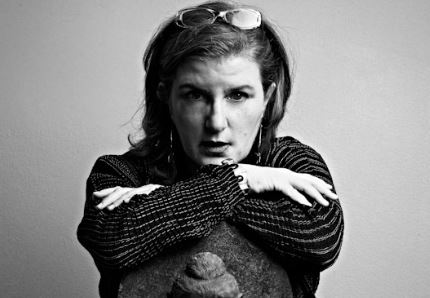 Prosecutors allege the two conspired for decades with a network of smugglers and middlemen to obtain looted and stolen antiquities from across Asia. Many of those objects passed through auction houses before being purchased by museums and private collectors. (See our earlier coverage here.)
Prosecutors allege the two conspired for decades with a network of smugglers and middlemen to obtain looted and stolen antiquities from across Asia. Many of those objects passed through auction houses before being purchased by museums and private collectors. (See our earlier coverage here.)
Where are these objects today? Where did they come from? And how many of them have a documented ownership history that stands up to scrutiny?
To answer those questions, we want your help searching Asian art collections around the globe for objects tied to the Wieners. As we find them, we’ll post them here, examine their ownership histories and, with IPP’s help, try to identify where they may have come from.
Here’s how you can chip in:
- Search the online archives of major Asian art collections around the world for objects tied to Nancy or Doris Wieners or their galleries. For collections that don’t have comprehensive online catalogs, contact the institution and politely ask for information on any objects acquired or donated by either of the Wieners.
- When you find an object, post a link to it in the comments below along with the object’s stated ownership history (if any is provided). Or email me at chasingaphrodite@gmail.com. We’ll credit you with the find unless you prefer to remain anonymous. Anonymous tips are also welcome, especially when they come with documents. We’re serious about protecting the identity of sources.
- As we find Wiener objects, we’ll add them to a list below along with suggestions for additional research steps.
FINDINGS
UPDATED 2/5/17: In our first month, readers have found dozens of objects tied to Nancy and Doris Wiener at museums around the world. Several require additional research.
The Boston Museum of Fine Art and the Freer and Sackler Gallery have both reached out to share ownership histories of Wiener objects in their collections.
Smithsonian’s Freer and Sackler Gallery
Keri Douglas (@keridouglas) identified three objects at the Smithsonian’s Freer and Sackler Galleries tied to Doris Wiener. Of particular note is this Chola bronze (F2003.2) from Tamil Nadu, India, the source of hundreds of looted objects identified in the case against Subhash Kapoor, who did business with the Wieners.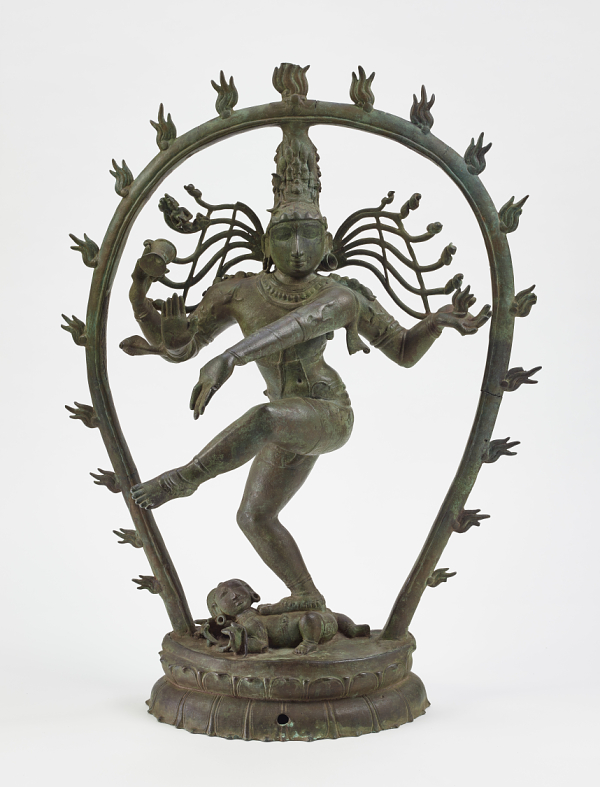
UPDATE 1/31/17: The Freer and Sackler’s head of collections management Elizabeth Duly reached out to say the museum has posted provenance details for the four objects on its Provenance Research page. We’re grateful for the museum’s openness.
The ownership history for the Chola bronze has several red flags. It includes an invoice stating that Doris Wiener bought the object from Rajrama Art Galleries in London in March 1973, six months after India passed its national patrimony law in September 1972.
Wiener claimed in a 1995 letter to then curator Vidya Dehejia that she had actually purchased the bronze months earlier and that it was seen in 1973 by Indian art authority Pratapaditya Pal. It’s unclear what motivated the letter. The story suggests that Wiener held the valuable bronze for 29 years – without publication or sale – before selling it to the Smithsonian in 2002.
We asked Vijay Kumar, an expert on South Indian art and smuggling networks who has consulted for U.S. law enforcement, to review the museum’s posting. “The given paperwork is straightaway problematic since the bronze has no provenance pre 1972 and no information on how it reached London pre 1972,” Kumar wrote. As for the 1995 letter, “There is no apparent reason for this explanation but an attempt to push the objects acquisition back by a year.”
Observing the patina, Kumar noted the condition of the bronze – especially the holes in the reverse and on the base pedestal – suggest it may have come from a buried hoard rather than an active temple.
“India should stake its claim for this bronze purely on the basis of no documented provenance pre 1973 and also take the official statements of the celebrated scholars in this case,” Kumar concluded.
Given the Wieners have been accused of fabricating ownership histories for decades, we agree it would be wise to further investigate these claims.
Next steps: As a federal agency, the Smithsonian museums are subject to Freedom of Information Requests. We should request all documents related to the acquisition of these objects.
Boston Museum of Fine Art
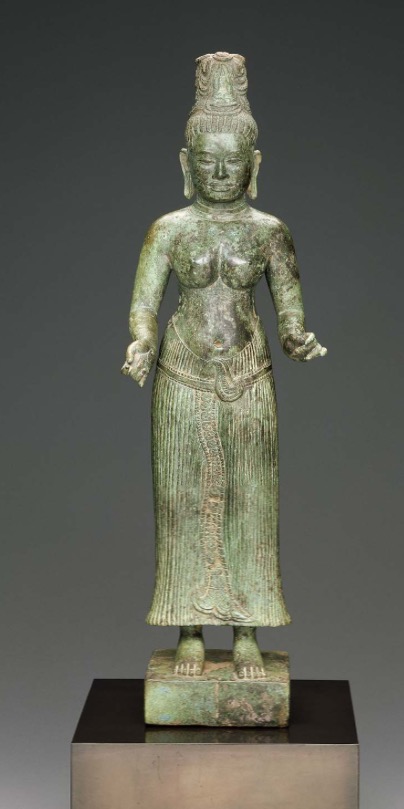
Female Khmer Deity
Victoria Reed, the curator of provenance at the Boston MFA, reached out pro-actively to share five objects the MFA acquired from Doris Wiener. They are:
Recumbent Bull (1988.434). 11th Century sandstone sculpture from Cambodia. Sold by Doris Wiener, Inc., New York, to the MFA. on October 26, 1988. No known provenance. No photo available.
Female Khmer Deity (1988.484). Doris Wiener apparently told museum the sculpture had been discovered near Wat Phu, Champasak Province, Laos and was first offered to a “Bangkok art collector” in early 1980s. Wiener sold it to the MFA on December 21, 1988.
Next step: Who is the “Bangkok art collector?” Might it be Douglas Latchford? Are there archival photos of objects at War Phu?
Shiva as Lord of Dance (1992.12) The sandstone sculpture from Central-eastern Madhya Pradesh was acquired by Doris Wiener in 1991. She sold it to the MFA on February 26, 1992. The museum has no other provenance.
Next step: Stylistically, what sites in central-eastern Madhya Pradesh could this sculpture could be associated with? Were those sites documented during colonial times?

Krishna Celebrates Holi (2002.901) Watercolor dating to 1750 – 60. Doris Wiener claimed to acquire the painting in 1972 and sold it to Paul F. Walter, New York; The painting was sold on November 14, 2002 at Sotheby’s, New York, lot 29, to the MFA.
Tibetan Avalokiteshvara (2003.339) According to a July 29, 2003 signed statement from art dealer Leonidas (Aleko) Goulandris, his gallery Arjuna Arts, Ltd. acquired the sculpture at Spink and Son, London, in 1967 and sold it to Doris Wiener in 2003. That same year, on September 17, Wiener sold it to the MFA.
Next step: Need someone to contact Goulandris to confirm the story and learn whether there is additional information about the sculpture’s origins prior to Spink and Son.
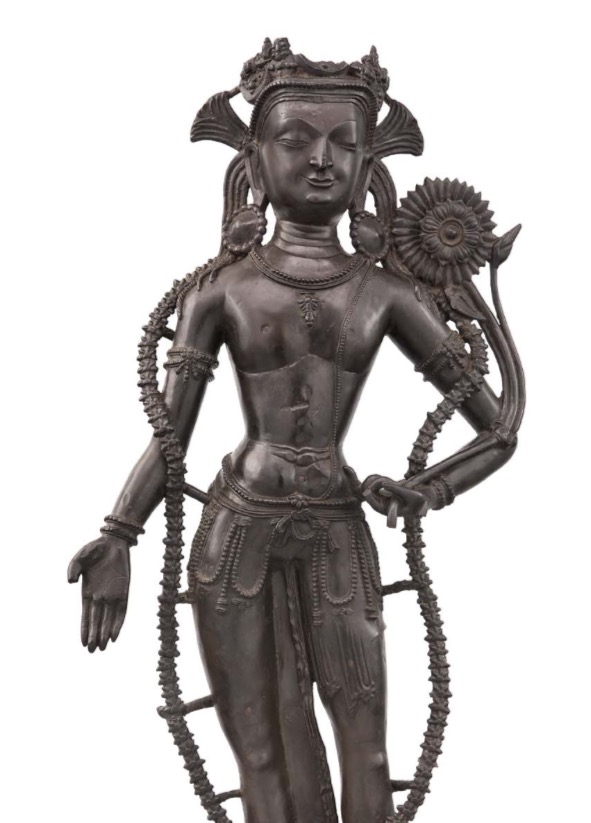
Avalokiteshvara
Art Gallery of New South Wales
Reader Judith Gibson pointed us to this 10th century Durga Slaying the Buffalo at the Art Gallery New South Wales (163.1999). The Australian museum, currently run by former Getty director Michael Brand, says it is investigating the origins of the sculpture, which was acquired from Nancy Wiener, who claimed to have it since 1999. The Australian has reported that Wiener sold it to the museum in 1999 for $95,000 without any proof of prior ownership. Wiener did not respond to the newspapers inquiries.
Next step: Inquire with the museum what steps it is taking to investigate the Durga.

Durga Slaying the Buffalo
Musee Guimet
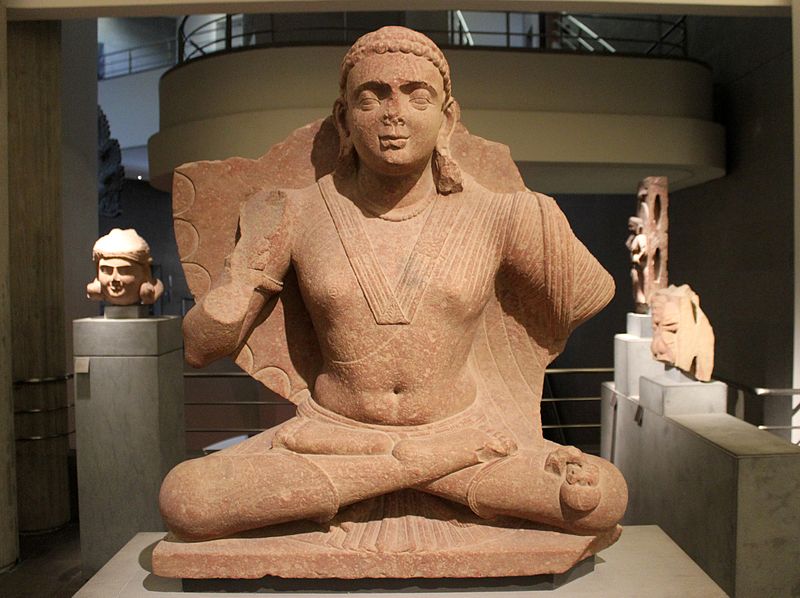 A confidential source pointed us to this Kushan Buddha at the Musee Guimet in Paris. The source believes Doris Wiener may have sold the sculpture, which is strikingly similar to Kushan Buddhas her daughter Nancy sold with false provenance to the National Gallery of Australia and Singapore’s Asian Civilizations Museum. As the criminal complaint detailed, these Seated Buddhas were allegedly stolen by the notorious convicted idol thief Vaman Ghiya.
A confidential source pointed us to this Kushan Buddha at the Musee Guimet in Paris. The source believes Doris Wiener may have sold the sculpture, which is strikingly similar to Kushan Buddhas her daughter Nancy sold with false provenance to the National Gallery of Australia and Singapore’s Asian Civilizations Museum. As the criminal complaint detailed, these Seated Buddhas were allegedly stolen by the notorious convicted idol thief Vaman Ghiya.
Next steps: Someone, preferably a French speaker, needs to contact the Guimet and politely inquire about the Guimet Buddha’s provenance. We should also ask for details on any other objects acquired from the Wieners.
ADDITIONAL LEADS
Here are some more leads to follow…
Museums
On her website, Nancy Wiener boasts of selling Asian art to museums around the world, including:
Metropolitan Museum of Art
Asia Society
The Los Angeles County Museum
The Art Institute of Chicago
The Nelson-Atkins Museum
The Asian Civilizations Museum in Singapore
Doris Wiener, who started dealing Asian art in the 1960s, is said to have sold objects to:
The Metropolitan Museum of Art
The Cleveland Museum of Art
The Norton Simon Museum
Asia Society
The Brooklyn Museum
This is obviously an incomplete list, so other museums with Asian art collections should also be searched or contacted. Don’t forget about University museums and collections.
As a starting point, try the museum’s online collection records, which can often be searched by ownership history. For example, the Metropolitan Museum of Art’s online collection shows 10 objects tied to Doris Wiener and 6 objects associated with Nancy Wiener. (We’ll contact the Met about those and post their response.)
For museums that don’t have complete provenance information online, which is most, please contact the museum and politely request a complete list of objects from the Wieners, along with all available provenance information for those objects. You may have to be persistent – this is information should be readily available to the public, but many museums are reluctant to release it. It may be helpful to note the antiquities policy of the Association of Art Museum Directors, which states:
AAMD is committed to the exercise of due diligence in the acquisition process, in particular in the research of proposed acquisitions, transparency in the policy applicable to acquisitions generally, and full and prompt disclosure following acquisition.
Museums that seek to be transparent and proactive should post all of their Wiener objects – with a complete ownership history – on their Provenance pages, as the National Gallery of Australia did (belatedly) in response to the Kapoor investigation. This is a clear signal of an institution’s good faith.
Auction Houses
Most major auction houses have online searchable sales archives that include some (but sadly not all) provenance information. Look for any objects that passed through the Nancy or Doris Wiener.
Once you find them, we’ll have to track down where they are today. Some creative Google searching can often work, as can reverse image searches on Google images or TinEye.
There’s also the Doris Wiener Collection. When Doris Wiener died in 2011, Christie’s sold a collection of 380 her objects. The criminal complaint against Nancy Wiener describes how many of those objects came through Asian smuggling networks.
Where are they today? Some were likely acquired by museums, while others were probably purchased by private collectors. Unless Christie’s releases this information, some sleuthing (or tipsters) will be required to track them down.
Like museums, auction houses who have done business with the Wieners should be proactive and transparent by posting complete information on objects they’ve sold tied to the Wieners. This will send a clear signal to the public that they’re not interested in protecting art traffickers.
Private Collectors
Doris Wiener is said to have sold antiquities to leading collectors, including John D. Rockefeller III, Igor Stravinsky and Jacqueline Kennedy. Nancy Wiener also sold to prominent private collectors.
What came of those collections? Where are those objects today? Private collections are difficult to search unless they’ve been published in a catalog or loaned to a museum or gallery show.
Some private collectors may want to come forward in good faith, and we should encourage them. If you own an object sold by Nancy or Doris Wiener – or know someone who does – email me here and share what you can. We may be help to help you assess its origins.
Dealer Catalogs
Many galleries publish sales catalogs of their inventory. Did Doris or Nancy Wiener? Can we track them down?
The Nancy Wiener Gallery’s website has posted images of objects she was selling over the years. The Internet Archive can be used to search it back to 2011: http://web.archive.org/web/*/http://www.nancywiener.com
Happy hunting!
Posted in News
Tagged Doris Wiener, Doris Wiener Gallery, India Pride Project, Nancy Wiener, Nancy Wiener Gallery
UPDATED > Manhattan Dealer Nancy Wiener Arrested: Criminal Complaint Alleges Sweeping Conspiracy to Sell Stolen Asian Art Through Major Auction Houses
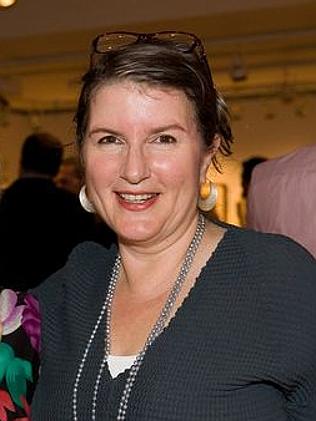 Antiquities dealer Nancy Wiener was arrested Wednesday morning in Manhattan and charged with conspiring with international smuggling networks to buy, smuggle, launder and sell millions of dollars worth of stolen Asian art thru leading auction houses.
Antiquities dealer Nancy Wiener was arrested Wednesday morning in Manhattan and charged with conspiring with international smuggling networks to buy, smuggle, launder and sell millions of dollars worth of stolen Asian art thru leading auction houses.
Wiener is a second generation dealer who runs one of the country’s most prestigious Asian art galleries on Manhattan’s Upper East Side. For nearly three decades, the Nancy Wiener Gallery has sold Asian art to private collectors and museums, including the Metropolitan Museum of Art, Asia Society, the Los Angeles County Museum, the Art Institute of Chicago, the Nelson-Atkins Museum, the National Gallery of Australia and the Asian Civilizations Museum in Singapore, according to her website.
The criminal complaint filed after her arrest on Wednesday alleges Wiener was part of a sweeping conspiracy to funnel stolen artifacts into the art market. For decades, the complaint alleges, Wiener has bought stolen and looted antiquities from thieves and smugglers across Asia; sent them to restorers to erase evidence of their theft; and then laundered them through Sotheby’s and Christie’s auction houses, using straw buyers to create false ownership histories and artificially set market prices.
The 12-page complaint, signed by ICE Special Agent Brenton Easter, cites “tens of thousands of pages of emails, documents and photographs” recovered during more than 50 search warrants carried out since 2007. Easter has been the lead investigator on Operation Hidden Idol (the Subhash Kapoor case), Operation Mummy’s Curse and most of the other prominent federal investigations of the illicit antiquities trade in recent years. The prosecutor on the case, Manhattan Assistant DA Matthew Bogdanos, also has a long track record disrupting antiquities smuggling networks and is the author of the book Thieves of Baghdad.
Wiener’s attorney, Georges G. Lederman, told the New York Times his client had surrendered voluntarily. “We are examining the charges and will respond at the appropriate time,” Lederman said.
I’ve asked Sotheby’s and Christie’s for comment on the allegations. I’ll post their responses here when I receive them.
The Seated Buddhas
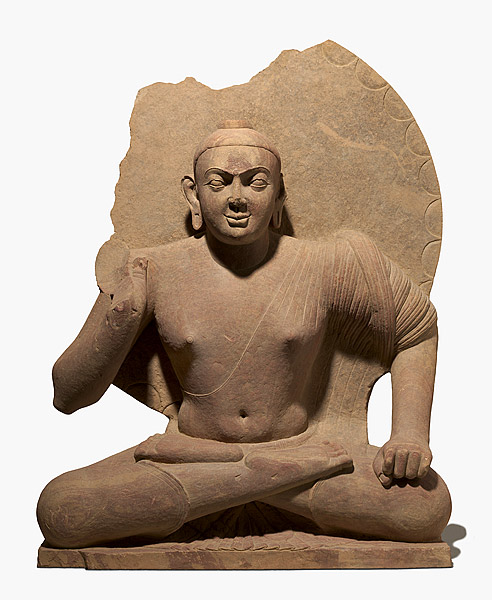
The Seated Buddha in Australia
Wiener’s alleged ties to the black market first came to light in 2014 when Michaela Boland and I reported in The Australian newspaper that the dealer had provided a false ownership history when she sold a $1.08 million Seated Buddha to the National Gallery of Australia. As I detailed later, the story started in 2012 when a source tipped me off that Wiener had bought the Australian Buddha – and a matching one that she sold to the Singapore’s Asian Civilizations Museum – from an Indian antiquities trafficker.
Australian authorities conducted their own investigation and reached the same conclusion. They returned the Buddha to India earlier this year, and Wiener was forced to refund the purchase price.
Wednesday’s criminal complaint cites the two Seated Buddhas as evidence of Wiener’s criminal conduct and reveals important new details about their illicit origins.
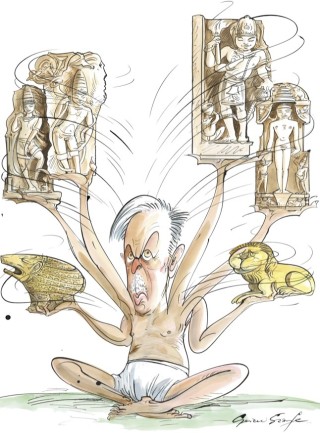 She sold the first to Singapore’s ACM without being asked to provide its ownership history, the complaint states. After I repeatedly asked the museum to release its records (to no avail), the museum appears to have contacted Wiener for additional information.
She sold the first to Singapore’s ACM without being asked to provide its ownership history, the complaint states. After I repeatedly asked the museum to release its records (to no avail), the museum appears to have contacted Wiener for additional information.
According to the complaint, Wiener gave the ACM an evolving series of stories about its previous owner: first she said it had been in a “European collection” for decades; then she said the owner’s father had acquired the piece in India. Finally, she named the former owner and said he had purchased it while stationed in Vietnam in the 1960s. That name, Ian Donaldson, is the same false story she provided to the National Gallery of Australia.
In fact, records seized during the investigation show that Wiener acquired them both from none other than Vaman Ghiya, the notorious Indian idol thief whose criminal case was profiled in the New Yorker in 2007.
Photos of the ACM Buddha seized during the investigation show it “wet as it lay on a dirty floor in front of a black backdrop” – presumably as it appeared shortly after being looted from India’s ancient city of Mathura, the second capital of the Kushan empire. The sculpture remains on display in the Singapore museum.

Auction House Due Diligence in the Spotlight
While they are not accused of criminal conduct, Sotheby’s and Christie’s play a prominent role in the alleged criminal conspiracy described in court records filed Wednesday. Several objects illustrate how the auction houses allowed Wiener to launder looted antiquities by accepting false ownership histories without question.
 When Wiener consigned a Cambodian sculpture of 11th century Shiva at a 2011 auction at Sotheby’s, the auction house noted that cracks in the sculpture “had been dressed up with plaint splatters to mask repairs” – a clear sign of looting, according to the complaint.
When Wiener consigned a Cambodian sculpture of 11th century Shiva at a 2011 auction at Sotheby’s, the auction house noted that cracks in the sculpture “had been dressed up with plaint splatters to mask repairs” – a clear sign of looting, according to the complaint.
Sotheby’s nevertheless accepted Wiener’s word that it had been out of Cambodia since 1968 and required no documentation from the dealer to support the claim. When selling Lot 29 at the March 24, 2011 sale, Sotheby’s described it as coming from a “Private English Collection, acquired 1960s.” “This exceptional figure exemplifies the highest achievements of the Baphuon School and is arguably amongst the best of its kind,” the catalog noted. It sold for $578,500.
In fact, there was no English collection, the complaint alleges. Seized emails show Wiener and a co-conspiritor (“an antiquities dealer based in London and Bangkok”) had acquired the sculpture “direct from a supplier, and not through a dealer” for half its market price. They sent it to London to be “cleaned, put together and mounted,” all evidence, the complaint alleges, that it had been recently looted.
I’ve asked Sotheby’s attorney (and former federal prosecutor) Jane Levine for a comment and will post it when I hear back.

The Doris Wiener Collection
Christie’s is also singled out in the complaint for the sale of nearly 400 objects – many of them allegedly looted or stolen – that had belonged to Nancy Wiener’s mother Doris, a prominent dealer in her own right who pioneered the Asian art market in the 1960s and 70s’s with sales to prominent collectors like John D. Rockefeller and Jacqueline Kennedy.
Doris continued to deal until her death in 2011, when Nancy inherited her mother’s collection and allegedly destroyed all records of the smugglers from whom they had been acquired. Wiener intially tried to consigned the collection for sale at Sotheby’s, but was turned away because she could not provide their ownership history. So Wiener turned to Christie’s, which according to the complaint only required evidence that the objects had been on the market since 2000 – a full 30 years later than the 1970 standard required by most museums and archaeologists.
Even that low bar was too high for Christie’s, which allegedly only asked Wiener for documentation on the top 25 of the sale’s 380 lots. Wiener told Christie’s 10 had come from Spink and Son, a defunct London auction house that has frequently been linked to looted antiquities. Several others had previously been sold at auction by Doris and re-acquired in “straw purchases” designed to create the impression of good provenance.
This dodgy track record for a fraction of the lots appeared to be enough for Christie’s, which auctioned all 380 lots on March 20, 2012 for a total of nearly $12.8 million dollars.
UPDATE: On December 28, Christie’s released a brief statement on the arrest of Nancy Wiener: “We are aware of these very serious allegations against the defendant and are monitoring the legal proceedings closely. We will withhold further comment until the appropriate time.” I’ve asked whether they will notify customers who purchased objects from the Doris Wiener sale and will post a response when I receive it.
Dozens of the objects sold in that sale have now been tied to smuggling networks reaching from Afghanistan and Pakistan to India, Cambodia and Thailand. We’re report details of those networks soon.
A copy of the criminal complaint can be read here:
Posted in News
Tagged Brent Easter, Christies, Matthew Bogdanos, Nancy Wiener, Nancy Wiener Gallery, National Gallery of Australia, Sotheby's
UPDATED > Asia Week Arrest: Japanese Dealer Convicted Of Selling Stolen Art
Japanese antiquities dealer Tatsuzo Kaku was arrested at Asia Week and charged on March 14th with criminal possession of a looted 2nd Century Buddhapada sculpture valued at more than $1 million, court records show.
UPDATE: On March 24, Kaku plead guilty to criminal possession of stolen property in exchange for a $5,000 fine and a sentence of time-served. Prosecutors explained the light sentence by saying Kaku had cooperated with on-going investigations. “This is part of a larger, ongoing investigation and there were cases where Mr . Kaku actually provided information,” Assistant District Attorney Matthew Bogdanos told the court.

An image of the seized Buddhapada released by the Manhattan District Attorney’s office
Kaku, who owns Taiyo Ltd. in Tokyo, consigned the Kushan-period sculpture of the Buddha’s footprints to the Maitreya Inc. for sale at Asia Week.
Maitreya is owned by antiquities dealer Nayef Homzi, a prominent Manhattan dealer in Asian art who was previously director of the Doris Wiener Gallery, owned by the mother of Nancy Wiener, whose gallery was also raided this week. Homzi was the target of a federal investigation at last year’s Asia Week after he was caught trying to sell looted Indian sculptures valued at more than $500,000.
In a statement, Manhattan District Attorney Cyrus Vance said, “The theft of antiquities has to be treated as the serious criminal matter it is. Our objective in these cases is to return the stolen item to the country where it was plundered from, and deter others from engaging in the illegal trade of cultural heritage.”
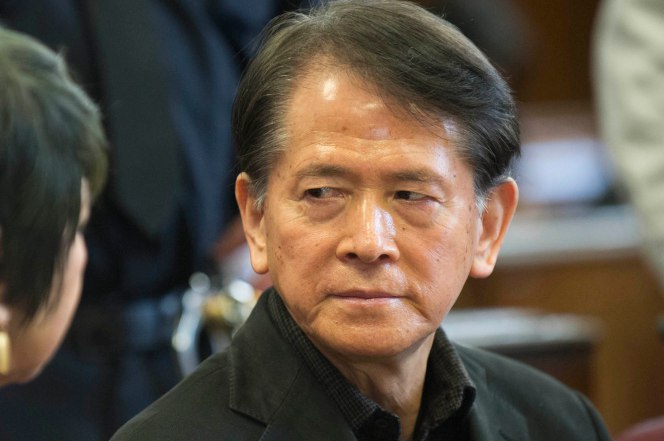
Japanese antiquities dealer Tatsuzo Kaku
The story of the Buddhapada starts in 1982 in Pakistan’s Swat Valley, when Kaku purchased the sculpture directly from smugglers, court records state. “When I saw the Buddhapada for the first time in Pakistan in 1982 they didn’t allow me to take photographs,” Kaku states in emails cited in the criminal complaint. “They didn’t tell me the exact place [where it was found.] As can be understood by the color of the stone, is an archaeological find from Swat.”
Kaku told authorities after his arrest this week that he knew it was illegal to purchase such material at the time, court records state. In 1975, Pakistan enacted the Antiquities Act, which bars the export of antiquities without state permission.
The sculpture was smuggled to Japan and sold to a private collector there. “After the collector passed away I sold it to Alexander Gotz in London in 2001. I bought it back from him in 2003 and sold it to another Japanese collector. In 2012 on request of the family of the collector who has gone on in years, the item has been entrusted with me…,” Kaku wrote in an email send in December 2015.
Kaku arranged to have the object shipped to New York City for its sale during Asia Week. He told authorities that he “knew it was illegal but that he loved antiquities so much and hated to see them destroyed,” court records state.
The sculpture was seized by authorities on March 14 and will be returned to Pakistan. Kaku was arraigned on March 14 and will next appear in a Manhattan court on March 25th.
At his March 24 sentencing, Kaku told the court through a translator that he believed was saving the looted objects he sold: “While I did stand to gain financially from the prospective sale of the Buddhapada, I was equally motivated by a life-long desire to preserve for posterity such works, which, if they were to remain in Pakistan, would, I believe, at best fall into disrepair and at worst be destroyed,” he said. “I now know, however, that it is not the right of any individual or institution to decide how the cultural patrimony of another country should be handled.”
Manhattan District Attorney Cyrus R. Vance, Jr. had a different take on the case.
“Every year, fine art collectors from around the world flock to New York for Asia Week, where they spent a reported $360 million last year on Asian antiquities and art,” said Vance. “With high demand from all corners of the globe, collectors must be certain of provenance before purchasing. I urge dealers and auction houses to take every necessary precaution to avoid facilitating the sale of cultural heritage stolen from other civilizations. If a provenance is in doubt, report it to law enforcement authorities.”
Posted in News
Tagged Alexander Gotz, Asia Week 2016, Cyrus Vance, Doris Wiener Gallery, Nancy Wiener, Nayef Homzi, Taiyo Ltd., Tatsuzo Kaku
Busted: Asia Week Raids Reveal Scope of Illicit Trade in Asian Art
Federal agents raided the Nancy Wiener Gallery on Thursday, the latest move in an aggressive crack down on the trade in ancient Asian art that has targeted several leading dealers and auction houses and shaken up New York’s Asia Week art show.
Federal agents were given a court order to seize the following objects from the Wiener Gallery:

A 1st Century red sandstone Kushan Relief valued at $100,000
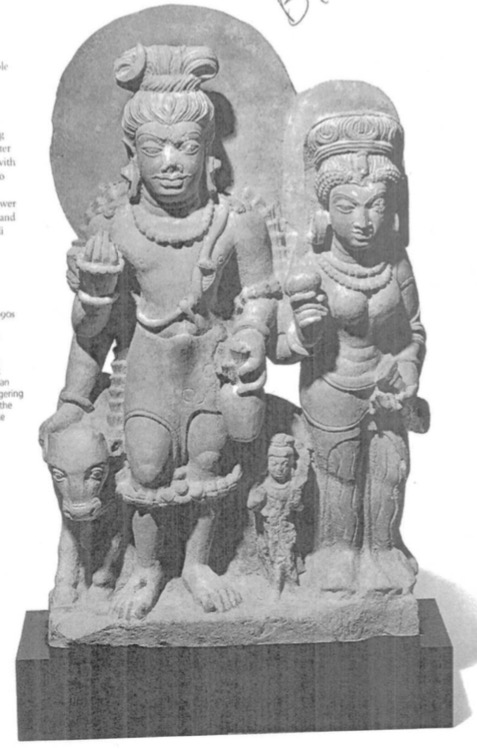
An 8th Century limestone sculpture of Shiva and Parvati valued at $35,000
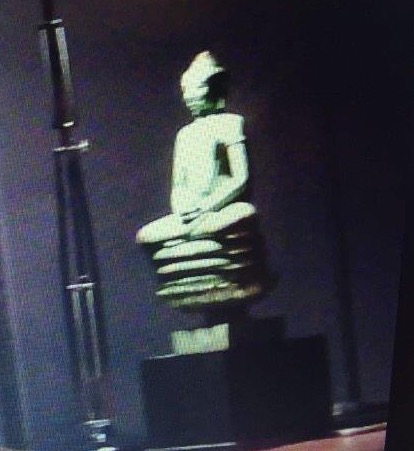
A 10th Century bronze Buddha from Thailand or Cambodia valued at $850,000
 Wiener is a second generation antiquities dealer who runs one of the country’s most prestigious Asian art galleries on Manhattan’s East 74th Street. Last year we revealed her role in the sale of a Kushan Buddha with a false ownership history to the National Gallery of Australia. Wiener agreed to refund the $1.08 million purchase price to the museum, which will soon return the sculpture to India.
Wiener is a second generation antiquities dealer who runs one of the country’s most prestigious Asian art galleries on Manhattan’s East 74th Street. Last year we revealed her role in the sale of a Kushan Buddha with a false ownership history to the National Gallery of Australia. Wiener agreed to refund the $1.08 million purchase price to the museum, which will soon return the sculpture to India.
Wiener is the latest target in a series of high profile Asia Week raids that were quietly orchestrated over the past year by special agent Brent Easter at Immigration and Customs Enforcement and prosecutor Matthew Bogdanos at the Manhattan District Attorney’s Office.
The investigation, dubbed Operation Hiddon Idol, began with Subhash Kapoor, who is currently on trial in India. As we’ve covered in a series of posts since 2012, authorities seized 2,622 objects valued at more than $100 million from Kapoor’s business and storage facilities. Perhaps more importantly, federal agents secured the cooperation of former Kapoor associates and seized decades of his business records, both of which have revealed a network of antiquities looters and smugglers across Asia whose objects Kapoor sold to museums and collectors around the globe.
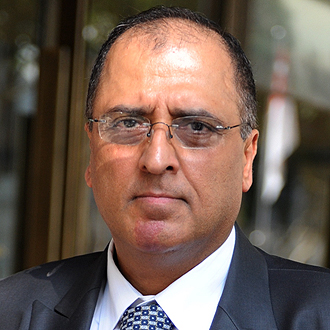 In the years since the Kapoor seizures, Easter and Bogdanos have been investigating the collectors and museums who bought from Kapoor and the suppliers who smuggled looted antiquities for him. Easter’s work on the case is highlighted in this short documentary by director Jason Kohn.
In the years since the Kapoor seizures, Easter and Bogdanos have been investigating the collectors and museums who bought from Kapoor and the suppliers who smuggled looted antiquities for him. Easter’s work on the case is highlighted in this short documentary by director Jason Kohn.
This week’s raids at Asia Week netted 8 antiquities valued at more than $4 million seized in five separate raids. Taken together, they offer dramatic evidence that Kapoor’s corrupt suppliers were selling looted objects to other top dealers in Asian art.
We’ll have more details on the Asia Week seizures in the days ahead.
The Crennan Report: The NGA’s Ex Post Facto Due Diligence Finds 22 “Questionable” Asian Antiquities

In an unprecedented review of its Asian art collection, the National Gallery of Australia has determined that 22 of the 36 objects examined to date have “insufficient or questionable provenance documentation.”
Among the problematic objects are 14 that came from Manhattan dealer Subhash Kapoor’s Art of the Past, including the $5 million Dancing Shiva returned to India by Prime Minister Tony Abbott last year and several others we’ve highlighted in previous reports. Also highlighted in the report is the museum’s Kushan Buddha, which our report last year revealed had been sold the museum with a false ownership history by Manhattan dealer Nancy Wiener. Wiener agreed to refund the $1.08 million purchase price, and the NGA will return the sculpture to India this year.
Eight other questionable objects came through Wiener and another Manhattan Asian art dealer, Carlton Rochell; the Swiss dealer/collector George Ortiz; and auction houses Spink and Son and Christie’s, among other familiar names. We’ll detail those objects in a subsequent report.
The ex post facto review is part of the museum’s Asian Art Provenance Project, which in the wake of an international looting scandal aims to assess and publish the collecting histories of all 5,000 art objects in the museum’s collection. It was sparked in part by our series of reports starting in June 2013 that revealed several of the museum’s prized Asian antiquities had been looted from Indian temples and sold by Manhattan dealer Subhash Kapoor with false ownership histories.

While years late, the Australian review goes beyond what American musuems undertook in the wake of similar looting scandals a decade ago, and sets an important new standard for due diligence: independent review and complete transparency with provenance.
Notably, the NGA asked an outside lawyer, Former Justice of the High Court of Australia Susan Crennan, to independently review and publish the project’s initial conclusions. In her 89-page report, Crennan reviews the relevant international laws and treaties before adopting a clear standard of review:
- does the object have a credible chain of ownership?
- the object was outside its probable country of origin before 1970, or was legally exported from that country after 1970?
For 22 of the objects, her answer was no.

On several occasions she cited (without credit) images first published here showing NGA objects the in process of being smuggled out of India to Kapoor. “Dr [Michael] Brand, who supervised the [Getty’s return of 40 looted objects], stated that such photos were the most convincing pieces of circumstantial evidence of theft,” Crennan noted.
Sprinkled throughout her report is commentary that serves as common sense advice to those conducting their own due diligence:
- “Circumstantial evidence can be as compelling as direct evidence, especially when several pieces of circumstantial evidence all support a particular conclusion.”
- Due diligence should include “direct contact with any living consignor, or previous owner, particularly to elicit the date and circumstances of the export of a work from a country of origin. The absence of such details increases the risk that the [acquirer] will not obtain good title from a vendor.”
- Even “reputable” dealers should be treated with skepticism, and the word of a dealer should not be taken as fact unless it can be independently corroborated.
- Buyers should “require revelation of the identity of any consignor, or previous owners of a work of art (which can be conveyed confidentially). They might also require direct contact with any consignor, or previous owner, so as to be satisfied of the date and circumstances of any export of an object from a country of origin.” Auction houses in particular should be pressed to reveal their consignors.
- “Listing such objects on a dedicated website achieves several desirable aims: it constitutes notice to the whole world (including any true owner) of a museum’s custody and possession of an object; it encourages exchange of provenance information between museums, especially those with objects of shared provenance; and it invites holders of a relevant interest, or relevant information, to come forward with that information.”
Buyers of antiquities would be wise to learn from the National Gallery of Australia’s example and follow these procedures before buying ancient art, not years later.
A copy of Crennan’s complete report can be found here.
The Seated Buddha Goes Home: Nancy Wiener and National Gallery of Australia Will Return Sculpture to India
The National Gallery of Australia announced Thursday that its prized second century Seated Buddha would be “donated” to India after the museum struck a deal for its return with Nancy Wiener, the New York gallery owner who sold the statue.
Under the deal, Wiener will reimburse the NGA the $1.080 million paid for the statue in 2007 and arrange for its return to India, the museum said in a statement.
The arrangement marks a rare case of a museum making good on a dealer’s good title guarantee at the time of sale.
I first raised questions about the Buddha in 2012, after an anonymous source contacted me suggesting the statue’s ownership history had been falsified. After the NGA released documents supporting that claim, the museum contacted the expert who had authenticated the sculpture, Donald Stadtner. Stadtner raised further questions about the sculpture’s origins, claiming in an email to museum officials that British collector Douglas Latchford had boasted in a meeting that he had “found Nancy a provenance” for a related Kushan Buddha that Wiener sold to Singapore’s Asian Civilizations Museum. Through his attorneys, Latchford has denied ever meeting Stadtner.
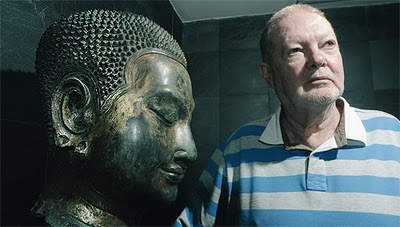 The National Gallery of Australia’s release does not resolve the questions about the sculpture’s provenance. “In 2007, the NGA regarded the information available about the sculpture as adequate at the time of its purchase with documented provenance outside India in 1964-66. As a result of new research undertaken by the NGA, particularly in light of the recently published Australian Government Guidelines for Collecting Cultural material, the NGA considers it unclear as to whether the work’s export from India complies with current Australian law. Given the passage of time, the NGA is of the view that further clarification on this issue is unlikely. Accordingly, the NGA and NWG have agreed that the best course is to donate the work to a museum or other cultural institution located in India.”
The National Gallery of Australia’s release does not resolve the questions about the sculpture’s provenance. “In 2007, the NGA regarded the information available about the sculpture as adequate at the time of its purchase with documented provenance outside India in 1964-66. As a result of new research undertaken by the NGA, particularly in light of the recently published Australian Government Guidelines for Collecting Cultural material, the NGA considers it unclear as to whether the work’s export from India complies with current Australian law. Given the passage of time, the NGA is of the view that further clarification on this issue is unlikely. Accordingly, the NGA and NWG have agreed that the best course is to donate the work to a museum or other cultural institution located in India.”
 Wiener, who has not responded to requests for comment, stood behind the story she provided the museum in 2007, the statement said. “While the [Nancy Wiener Gallery] affirms its confidence in the provenance of the Seated Buddha, it is dedicated to its relationship with the NGA. Therefore, the NWG has offered to refund the purchase price of the sculpture to the NGA, and to join with the NGA in donating the work to an appropriate Indian cultural institution. Both parties are now working collaboratively in the spirit of good will and with Indian officials to determine an appropriate destination in India for this great work.”
Wiener, who has not responded to requests for comment, stood behind the story she provided the museum in 2007, the statement said. “While the [Nancy Wiener Gallery] affirms its confidence in the provenance of the Seated Buddha, it is dedicated to its relationship with the NGA. Therefore, the NWG has offered to refund the purchase price of the sculpture to the NGA, and to join with the NGA in donating the work to an appropriate Indian cultural institution. Both parties are now working collaboratively in the spirit of good will and with Indian officials to determine an appropriate destination in India for this great work.”
The Buddha’s return sets a new standard for Australian museums that goes far beyond any reforms adopted in the United States. Guidelines adopted by Australian museums in the wake of the Subhash Kapoor scandal require objects to have valid export licenses from their country of origin.
If that standard is applied retroactively, as it has been in the case of the Kushan Buddha, many more objects in Australian museums are likely to be sent home.
The Kushan Buddhas: Nancy Wiener, Douglas Latchford and New Questions about Ancient Buddhas
In 2005, Canada’s Royal Ontario Museum was offered a rare sculpture of a Seated Buddha carved from red sandstone in the second century. It was from India’s ancient city of Mathura, the second capital of the Kushan empire, and one of only a handful of such sculptures to have appeared on the market in recent years.
 The dealer selling the sculpture was Nancy Wiener, whose eponymous Manhattan gallery has been a leading seller of Asian art for years. Her clients include the Metropolitan Museum, the Los Angeles County Museum, the Asia Society and prominent private collectors. Wiener’s mother Doris was a renowned Asian art dealer who Christies’ called “one of the most distinguished tastemakers in this collecting category.”
The dealer selling the sculpture was Nancy Wiener, whose eponymous Manhattan gallery has been a leading seller of Asian art for years. Her clients include the Metropolitan Museum, the Los Angeles County Museum, the Asia Society and prominent private collectors. Wiener’s mother Doris was a renowned Asian art dealer who Christies’ called “one of the most distinguished tastemakers in this collecting category.”
The Royal Ontario was keen to buy the Seated Buddha – until curator Deepali Dewan called the expert who had authenticated the sculpture for Wiener. Donald Stadtner, an authority in Indian art, told Dewan that he believed the statue had been illegally exported from India and given a phony ownership history to cover its tracks.
 After talking to Stadtner, the Royal Ontario Museum decided pass on the sculpture, Dewan confirmed in a recent email. Months later, Wiener offered it to the National Gallery of Australia for USD$1.2 million.
After talking to Stadtner, the Royal Ontario Museum decided pass on the sculpture, Dewan confirmed in a recent email. Months later, Wiener offered it to the National Gallery of Australia for USD$1.2 million.
No Questions Asked at the National Gallery of Australia
Wiener told NGA officials she had purchased the sculpture in 2000, museum records show. Previously, Wiener said, the sculpture had belonged to an Englishman named Ian Donaldson, who claimed to have purchased it while posted in Hong Kong between 1964 and 1966. She provided the museum with a 1985 Certificate of Ownership signed by Donaldson. It was the only record of sculpture’s ownership history, but the museum did not attempt to contact Donaldson.
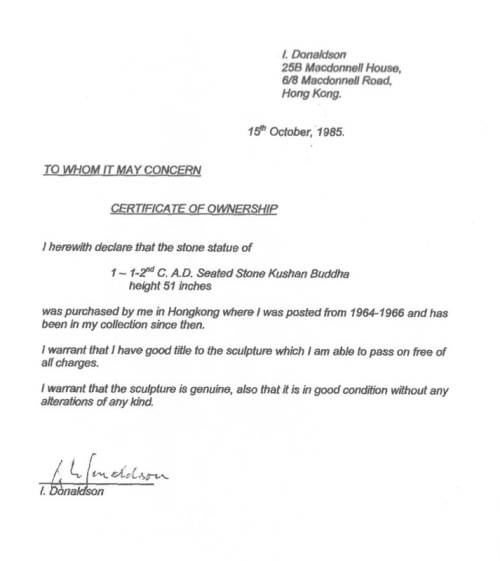
In July 2007, Wiener sent an invoice to the NGA for the discounted price of USD$1,080,000 and a signed guarantee offering to reimburse the museum if the provenance were ever proven false.

Two months later, as preparations for the Buddha’s acquisition were under way, the National Gallery of Australia received a search certificate from the Art Loss Register saying the sculpture was not in its database of stolen objects. Such declarations are largely useless for looted antiquities – as the certificate notes, “the database does not contain information on illegally exported artifacts unless they have been reported to us as stolen.”
Yet this was the extent of the museum’s due diligence. Museum officials never contacted Stadtner, whose authentication report for the Seated Buddha was among the paperwork provided by Wiener. The funds for the purchase were provided in part by Ros Packer, wife of the late media tycoon Kerry Packer and one of Australia’s most prominent philanthropists.
An Anonymous Tip
In 2012, I got an anonymous tip that the sculpture’s ownership history had been fabricated. The source identified the dealer as Nancy Wiener, and suggested the sculptures had been illegally exported from India. I shared the tip with Michaela Boland at The Australian, and in May 2013 we requested the sculpture’s ownership history from the NGA. The museum claimed the information was secret: “We do not provide details of this nature regarding acquisitions from the national art collection for clear commercial in confidence reasons,” museum spokesman David Edhill wrote.
Boland filed a Freedom of Information request for the records. In the fall of 2014, the Australian courts ruled in our favor and released copies of the NGA’s records – with the name of the dealer and former owner redacted. In November, we co-wrote a story in Australian about the case, linking the anonymous tip to the account in the museum records.
The Latchford Connection
In October 2014, as the records were released, the NGA began investigating the ownership history of the sculpture. It was only then that an NGA curator contacted Stadtner and asked him for any information he had about the sculpture’s origins.
In a Nov. 5th email to museum officials, Stadtner explained his long-held suspicions about the sculpture. The NGA’s was the second Kushan Buddha that Stadtner had examined for Wiener, he explained. The first he had studied in 1999 before it was sold to Singapore’s Asian Civilizations Museum.
Some time after, on a visit to Bangkok, Stadtner said he met with the Bangkok-based British collector Douglas Latchford. The main topic of conversation was Latchford’s role in the sale of fake Burmese bronzes, Stadtner said, one of which had been sold to the ACM in Singapore in 2000. While there, however, the two men discussed the ACM’s Seated Buddha.
“During the course of a long conversation (and boasting) Latchford said, en passant, that he found Nancy a provenance for the Buddha which by then was in Singapore,” Stadtner told NGA officials in the email. “I recall that he said that he found ‘an old India hand’ in ‘Hong Kong’. By an old India hand I interpreted this to mean an older English gentlemen who had served in India but who was based then in Hong Kong.”
 Stadtner was convinced the NGA’s Seated Buddha, sold several years later, had been offered with the same false story. “I strongly suspect that the ‘old India hand’ in H.K. will appear in the paperwork for both Buddhas, if my memory was correct and indeed he found this fellow in H.K. to provide the bogus certificates to Nancy for at least the Singapore Buddha.”
Stadtner was convinced the NGA’s Seated Buddha, sold several years later, had been offered with the same false story. “I strongly suspect that the ‘old India hand’ in H.K. will appear in the paperwork for both Buddhas, if my memory was correct and indeed he found this fellow in H.K. to provide the bogus certificates to Nancy for at least the Singapore Buddha.”
The NGA’s records, which Stadtner had not seen, appear to support his story: Wiener told the museum that the Buddha had belonged to a British ex-pat living in Hong Kong. Did Donaldson own the statues? What is his connection to Latchford? It is difficult to know: Andrew Ian Donaldson, listed at the same Hong Kong address supplied by Wiener, died in 2001, records show.
Latchford, whose alleged role in the Seated Buddha transactions has not been previously reported, did not respond to multiple requests for comment. His London attorney, however, was in touch. “Our client does not know Mr Stadtner, nor has he ever met him,” wrote Amber Melville-Brown of Withers LLP. “He is completely at a loss as to why Mr Stadtner would make such false assertions.”
Stadtner told me he has very specific memories of his visit to Latchford’s Bangkok apartment. I asked to interview Latchford to clarify the confusion. “My client is, as I have already pointed out, a frail, elderly gentleman in poor health,” wrote Melville-Brown. “Accordingly, it would be quite inappropriate for him to be interviewed by you about this matter and he is unable to do so.”
In 2012, Latchford was identified in federal court records as a middleman in the trafficking of looted antiquities from Southeast Asia. Authorities allege Latchford knowingly purchased two looted Khmer sculptures from “an organized looting network” and conspired with the London auction house Spink to obtain false export permits for them. The case was a civil lawsuit, and Latchford was not charged with a crime. But after a lengthy legal battle, Sotheby’s agreed to return its sculpture to Cambodia. Soon after, the Norton Simon Museum, Christie’s auction house and the Metropolitan Museum of Art all returned sculptures tied to Latchford. UPDATE: The Cleveland Museum returned another looted Khmer sculpture linked to Latchford in May 2015.
Melville-Brown,Latchford’s attorney, has previously asked me to remove our past coverage of Latchford’s role in the Sotheby’s case. I have declined, noting that the account is based on federal court records protected under U.S. law.
Stonewalling in Singapore
The Asian Civilizations Museum has refused to release the ownership history for its Seated Buddha. When pressed repeatedly, a spokesperson for the museum said, “The Kushana Buddha was purchased from a respected international dealer in the year 2000, who had purchased it from a private collector who had owned the piece since the 1960s.” Is that private collector Ian Donaldson? The museum won’t say.
Last fall, I went by Nancy Wiener’s Manhattan gallery to see if she could clarify the history of the Seated Buddha sculptures. Her gallery manager refused me entry and claimed he did not know how to put me in touch with Wiener. She has not responded to emails.
In January, the Times of India reported that Australian authorities had concluded that the NGA’s Seated Buddha was stolen from an archaeological site and agreed to return it to India. National Gallery spokeswoman Alison Wright would neither confirm nor refute that account, but acknowledged that the museum “commenced legal discussions” with Wiener in November. “Those discussions have not yet concluded and therefore we are not able to comment further,” she said.

